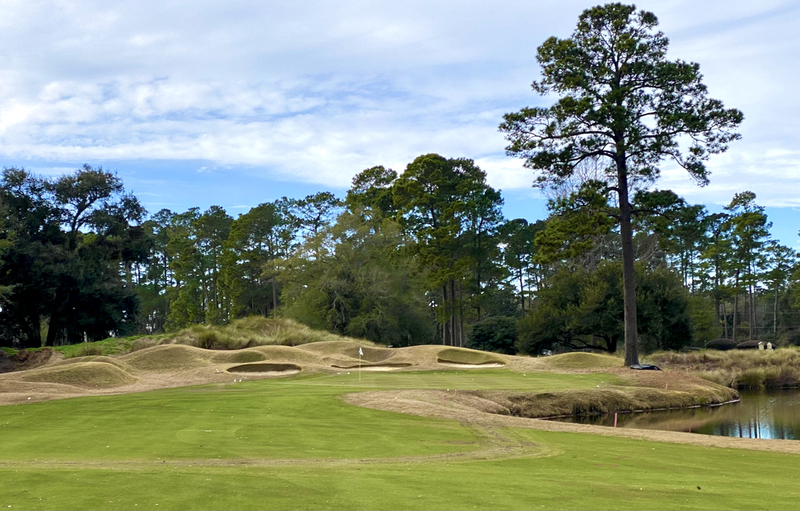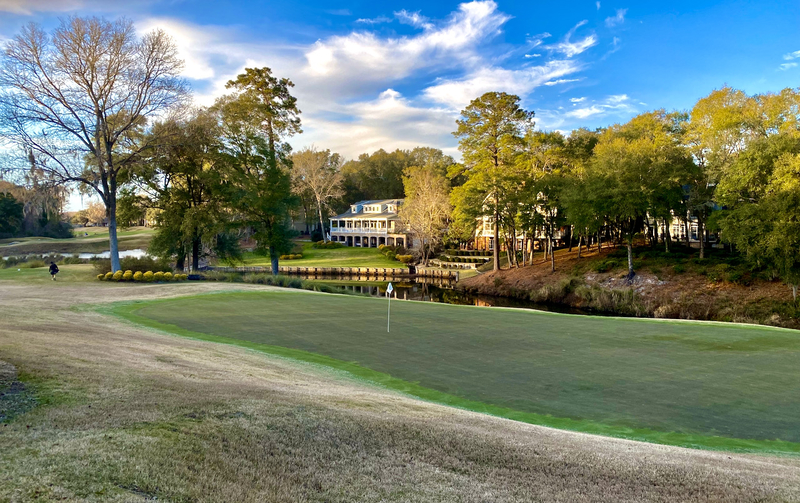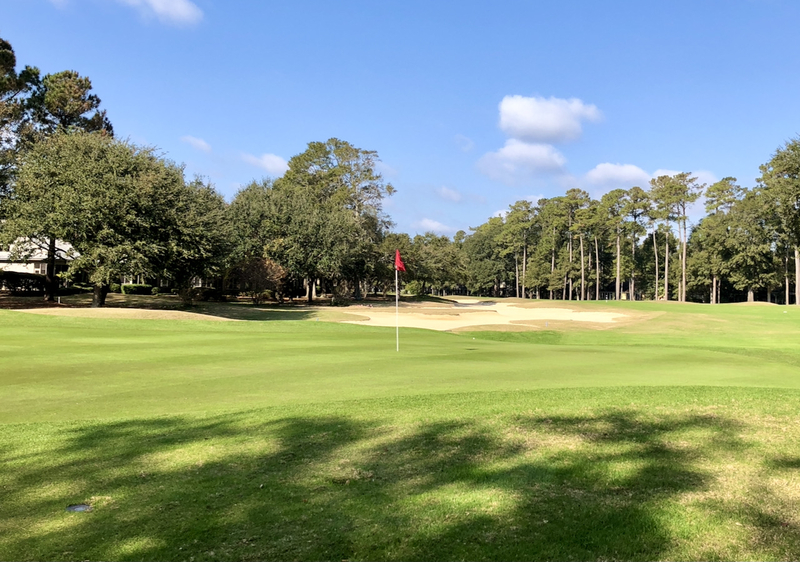When it first opened in the mid-1980s, Wachesaw Plantation in Murrells Inlet, SC, joined DeBordieu Colony in Georgetown as the only organized golf communities on Myrtle Beach’s South Strand. A few years later, Pawleys Plantation opened between them, providing the area south of Myrtle Beach a string of three top-designer golf courses: Tom Fazio at Wachesaw, Jack Nicklaus at Pawleys Plantation, and Pete Dye at Debordieu, which roughly translated from the French means “borderland of God.” (Stand on the beach at DeBordieu as the sun comes up and you will believe it.)
From its opening, the Wachesaw golf community was beset by two major issues that affected sales, and later sale prices, negatively. One was a disinclination by the community’s developer to welcome all local real estate agencies to list and sell property there; it took a couple of decades and a change of ownership to soothe hurt feelings and open up sales to a wider audience. Also, Wachesaw’s location west of US Highway 17 put it about 15 minutes from the area’s beaches; Pawleys Plantation is just a five-minute drive to the beach and DeBordieu’s beach is inside its gates, a mere golf cart ride for most homeowners. (The most recent golf community in the area, the Reserve at Litchfield Beach, maintains its own beach club just one mile from its front gate.)
 Moguls with deeply embedded bunkers frame the back of the 8th hole at Wachesaw Plantation, a par 5 that echoes the style of Tom Fazio, the course designer, with a big dollop of Pete Dye.
Moguls with deeply embedded bunkers frame the back of the 8th hole at Wachesaw Plantation, a par 5 that echoes the style of Tom Fazio, the course designer, with a big dollop of Pete Dye. More nettlesome for Wachesaw was that two-mile ride in from Highway 17; for years, the road was lined with unattractive homes, rusting cars parked on some of the front lawns. Things have changed dramatically in recent years. A couple of days ago, as my wife and I drove toward Wachesaw, we passed new homes with nicely landscaped front yards, not a rusting car in sight. It was a pleasant preliminary to my round that afternoon with a friend who is a member of the Wachesaw Plantation Golf Club.
About five years ago, I tinkered with the idea of a membership at the private Wachesaw club that would complement my membership at the semi-private Pawleys Plantation. Wachesaw membership at the time was an ultra-reasonable $3,000 and dues were equally affordable. I didn’t follow through simply because I couldn’t see to the day when I would spend more than a couple or three months in the area. Today, the club has raised its initiation fee to $15,000 and recently instituted a waiting list for membership. So confident are the club’s members in its future viability that they have embarked on the construction of a reported $3 million irrigation system, with lines running down the edges and through the middle of all fairways. About half the work has been done, and I noticed little scarring on the holes that had been worked on and repatched. It is hard to imagine that Wachesaw’s fairways and greens will not be the envy of every other club in the area, especially during the dog days of summer when the only half-reliable irrigation is a 10-minute thunderstorm in late afternoon.
 Some of the nicest houses in Wachesaw Plantation face the par 3 17th green across a pond that comes into play for pushed tee shots.
Some of the nicest houses in Wachesaw Plantation face the par 3 17th green across a pond that comes into play for pushed tee shots.My recent round at Wachesaw was probably the eighth or so I have played there in the last 20 years. It has always struck me as a course that could have been designed by Fazio and Pete Dye in tandem, given the combination of elaborate bunkering and swells and heaves in the fairways and around the greens. If anything, it is in better condition than I remember it and a joy (for me) to play from the hybrid tees at just over 5,500 yards. (Those are the ones you want if you drive the ball no farther than 200 yards.) I stand by my review of 12 years ago, which you can read here.
Home prices in Wachesaw, which were always the most reasonable among the top four golf communities on the South Strand, have moved up pretty much in keeping with the jump in initiation fees. I note six properties currently for sale in a range of $390,000 to $900,000. If you are interested, let me know and I will put you in touch with a local Realtor who knows the community and the area well.
























